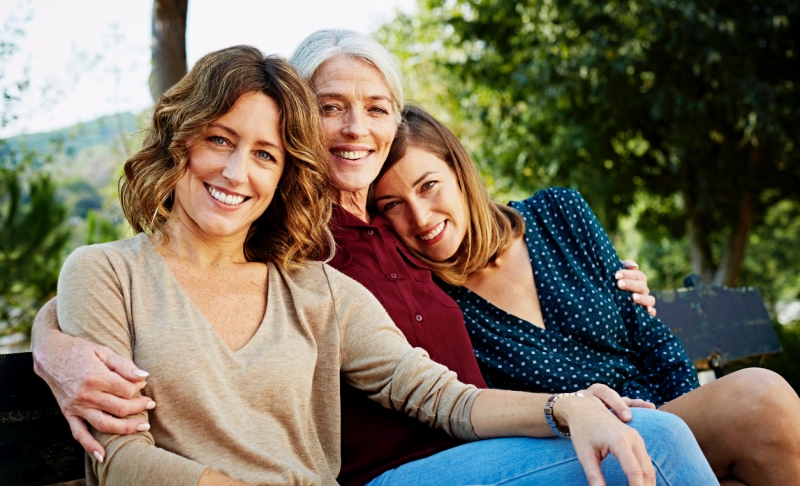
KEY POINTS
- The theme of this year’s International Women’s History Month is providing healing and hope.
- Florence Nightingale, Dr. Mary Pipher, Dr. Judith Orloff, and others are examples of women instilling hope and healing.
- Open communication, tapping into our consciousness, and being more self-aware are all ways to cultivate these strengths.
Since the early 1980s, every March we celebrate Women’s History Month. Earlier on March 8th we celebrated International Women’s Day. This year’s theme is “Women Providing Healing, Promoting Hope.” While this can apply to women in all walks of life, the intent of the Women’s National History Alliance is to honor the ceaseless work of caregivers and frontline workers for their tireless and devoted work during the Coronavirus pandemic, while also acknowledging women of all cultures and colors who have provided and continue to provide healing and hope.
Even though my career path began as a registered nurse, I believe that all my career paths—including as a psychology researcher and writer on healing and transformation—have all helped to provide hope and healing. Further, I have great reverence for others who walk similar paths.
Healers, Healing and Hope
When I think of the provision of healing and hope, Florence Nightingale, the founder of modern nursing, comes to mind. She is most known for making hospitals cleaner and safer places to be, dating all the way back to the Crimean War in the mid 1800s, and many of her practices continue today. There are so many others who in the course of my lifetime have made their life mission to provide hope and healing for others.
Another important healer is Judith Orloff, M.D., a psychiatrist and fellow Psychology Today blogger who claims that healing is possible when we combine the physical, emotional and spiritual realms. She asserts that we are keepers of intuitive and empathetic powers and if we tap into them, they can help us heal. Her book Emotional Freedom reminds us that happiness is possible. Her techniques and tools are empowering and poignant.
The first step Dr. Orloff suggests is to garner a sense of courage. With courage, we can accomplish almost anything. Some ways she says we can develop a sense of courage include choosing a fear that you’d like to eliminate, identifying what triggers your fear, framing your fear from a spiritual perspective, working on a spiritual connection to yourself by inwardly connecting with your spirit and telling it to take the fear from you.
Dr. Orloff defines emotional freedom as the ability to give and receive more love which, if successful, can minimize negative thoughts and actions. She says feeling hopeful feels like a quickening or perking up, as if a veil has lifted where our senses function better. It’s as if we’re opening our arms to a bouquet where melancholy dissipates, and we feel lighter and breathe easier.
Another transformative woman who comes to mind is Mary Pipher, a psychologist and author of the classic books Reviving Ophelia and her most recent masterpiece, Women Rowing North: Navigating Life’s Currents and Flourishing as We Age. Reviving Ophelia. With the former, Pipher helps many who have dealt with the challenges of raising adolescent girls. She reminds us that each adolescent is uniquely affected by their experiences and encourages healthy exploration.
Providing Hope for Daughters
She tells parents to listen to their daughters and foster independence, while at the same time being alert to the dangers of societal pressures, which can encourage early sexual encounters and experimentation with illegal drugs. Throughout the book, Pipher describes adolescent girls as young trees swaying in the onslaught of an ominous storm. She suggests that the tree’s roots are the family, who will hopefully be the supportive anchor and not allow dangerous choices to be made.
Providing Hope for Aging Women
In Women Rowing North, Pipher fast forwards to the aging woman, and the cultural and developmental challenges we face as we transition into this later stage in life. She says that most older women are grateful for all the gifts that life has bestowed on them and offers ways for aging women to maintain their sense of resiliency. She tells us we have the potential to experience a most joyous time of our lives “if we keep our wits about us, think clearly, and manage our emotions skillfully.” She emphasizes the importance of preparing for this stage in life, engaging in self-care activities, and continuing to have varied interests. We can do this, Pipher says. “We have planned carefully and packed properly, if we have good maps and guides, the journey can be transcendent.”
Summary
In summary, all of these female healers advocate the importance of open communication, tapping into our consciousness, and becoming more self-aware, fostering healing and hope. Hope can be defined as the feeling of being able to achieve something good in the future, especially when faced with challenges or diversity. It’s the ability to live the best quality of life. It’s also about being realistic and open to possibilities.
How to Foster Hope
- Nurture supportive relationships. Whether it’s about fostering hope in yourself or in others, remember that humans are social creatures and connection with others is important. Be with those who make you feel good about yourself and are supportive.
- Be receptive. In helping others, it’s important to pay attention to their needs and concerns. This involves being a good listener and being available when needed.
- Encourage others to celebrate their successes. Focusing on successes helps us have a greater sense of self-confidence and brings a certain peace of mind.
- Have a good reason for living. Having a life passion or a reason to awaken in the morning is important because it gives value and purpose to our lives.
- Practice resiliency. When we are resilient we can bounce back from life’s challenges and in turn, can offer hope.
- Practice mindfulness. Practicing mindfulness is about living in the moment and focusing on what we’re doing now without looking backward or ahead. It can also foster gratitude and hope.
- Nurture recreational activities. Whether it’s going out for nature walks, listening to music, reading, or watching a movie, it’s important to engage in distractions from your daily routine. It’s also a way to do what you love and bring yourself peace of mind.
References
Orloff, J. (2009). Emotional Freedom. New York: Free River Press.
Pipher, M. (2019). Women Rowing North. New York: Bloomsbury Publishing.
—
This post was previously published on Psychology Today.
***
You Might Also Like These From The Good Men Project
 Compliments Men Want to Hear More Often Compliments Men Want to Hear More Often |
 Relationships Aren’t Easy, But They’re Worth It Relationships Aren’t Easy, But They’re Worth It |
 The One Thing Men Want More Than Sex The One Thing Men Want More Than Sex |
 ..A Man’s Kiss Tells You Everything ..A Man’s Kiss Tells You Everything |
Join The Good Men Project as a Premium Member today.
All Premium Members get to view The Good Men Project with NO ADS.
A $50 annual membership gives you an all access pass. You can be a part of every call, group, class and community.
A $25 annual membership gives you access to one class, one Social Interest group and our online communities.
A $12 annual membership gives you access to our Friday calls with the publisher, our online community.
Register New Account
Need more info? A complete list of benefits is here.
—
Photo credit: iStock
